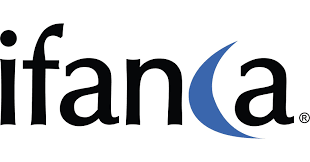
Seeking growth: How attractive is Uzbekistan’s halal food market?
Photo: People shopping in the meat market section of the Chorsu Bazaar in Tashkent, Uzbekistan on May 17, 2016. MehmetO/Shutterstock.com
Following Uzbekistan’s transition to a new president in 2016, the country is positioned to expand its infrastructure and enhance its trade capabilities. Given its 26 million-strong (and growing) Muslim population, what are the prospects for its halal food industry, and how can international food manufacturers play a leading role?
| YOUR PAIN POINTS ADDRESSED | ASK YOURSELF | |
| Scenario: You are a multinational food products manufacturer looking to expand internationally and considering a base in Central Asia. |
How attractive is Uzbekistan’s halal food market? |
How robust is the demand for halal food produced in Uzbekistan? |
| To what extent is Uzbekistan addressing this demand? | ||
| How can Uzbekistan gear up to capture its share of the global halal food trade opportunity? | ||
Uzbekistan’s halal food industry is set for substantial growth, underpinned by three strong demand drivers:
A growing Muslim population driving demand for halal meat
There was an estimated 28.2 million Muslims in Uzbekistan in 2015, according the Pew Research Forum. Muslims in Uzbekistan spent $10.4 billion on food and beverage in 2015, an increase from $9 billion in 2014, and accounted for 96 percent of the country’s total spend on food and beverage, according to DinarStandard analysis. This spend is expected to reach $20.4 billion in 2021, based on 14.4 percent cumulative annual growth between 2015 and 2021.
Meat consumption in Uzbekistan is projected to increase from 28.4 kg per capita in 2009 to 54.8 kg per capita by 2025, a 4.2 percent cumulative annual growth between 2009 and 2025, according to Uzbekistan’s Center for Economic Research.
Increasing number of Muslim tourists
Uzbekistan has seen a steady growth in tourism, with international arrivals growing from 975,000 visitors in 2010 to 2 million in 2015. The largest source markets are Russia (22.4 percent of visitors) and South Korea (8.2 percent). However, the majority of visitors arrived from neighbouring CIS countries who visited the country for family and friends.
Muslim visitors represent an important, high-potential segment for Uzbekistan. From the largest three leisure tourism source markets, Muslims accounted for 14.9 percent of visitors in 2013, with the largest source market being Turkey (18,166 visitors), followed by Russia (3,305), and India (1,645), according to a survey undertaken by National Tourism Entity Uzbektourism, in conjunction with the UNWTO.
Uzbekistan is in a prime position to attract more Muslim visitors, leveraging its rich Islamic history.

Photo: Unidentified Uzbek people walking in ancient Bibi-Khanym Mosque on July 07, 2013 in Samarkand, Uzbekistan. Natalia Davidovich / Shutterstock.com
Unaddressed trade opportunities
There are significant opportunities for Uzbekistan to export food and beverage products to Organisation of Islamic Cooperation (OIC) countries, which on aggregate imported $190 billion of food and beverage products in 2015. The largest OIC importers of food and beverage products in 2015 included Saudi Arabia ($21.5 billion), Malaysia ($15 billion), the United Arab Emirates ($14.8 billion) and Indonesia ($14.3 billion).
However, these opportunities are currently underutilized, with Uzbekistan exporting $3.2 million of meat and live animals in 2015, with only $32,000 of meat exports and $3.1 million of live animal exports. The largest destination markets for Uzbekistan’s live animal exports in 2015 included Kazakhstan ($831,000) and Turkey ($368,000).
The current picture in terms of supply
Agriculture is a critical segment of Uzbekistan’s economy, accounting for 18.8 percent of GDP in 2015, according to the State Statistics Committee of Uzbekistan. Meat produce itself accounts for 40.7 percent of total agricultural output or $5.9 billion in 2015, and is expected to reach $7.5 billion in 2020. This is based on 5 percent cumulative annual growth between 2015 and 2020.
Uzbekistan imported $1.25 billion of food and beverage products in 2015, accounting for 11.5 percent of total consumption, and is a net importer of meat and live animals, with a trade deficit of $124.1 million in 2015.
It imported $127.3 million of meat and live animals in 2015, which increased by 24 percent CAGR (2012-2015) from $66.6 million in 2012. Kyrgyzstan exported $33.5 million of meat and live animals to Uzbekistan, followed by Poland, which exported $29.1 million.
ROADMAP FOR HALAL INDUSTRY DEVELOPMENT
Establishing halal certification aligned with shifting accreditation requirements
Uzbekistan’s share of total global food and beverage exports to OIC countries represented less than 0.4 percent in 2015, with the country held back by a lack of robust halal certification.
There is no recognition of Uzbekistan-based halal certification bodies by any of the big certifiers such as Malaysia’s JAKIM or Indonesia’s MUI. There is no formal halal certification in Uzbekistan, although the existence of local certification bodies remains unverified.
A critical step for the country to access the broader export opportunity is to identify and work with key certification and accreditation bodies globally – including JAKIM and the UAE’s Emirates International Accreditation Centre (EIAC), to develop robust certification capabilities. This will enable the establishment of critical export agreements with OIC counterparts.

Photo: External view of domed bazaar, Telpak Furushon Trading marketplace on March 19, 2016 in Bukhara, Uzbekistan. Kudryashova Alla / Shutterstock.com
Enhance and strengthen trade cooperation with the nearest partners
Uzbekistan is undertaking significant investment in boosting its meat and food production capabilities, with the government planning to invest $15.7 million in the meat industry alone between 2015 and 2019. This includes government plans to invest $9.2 million in the expansion of production facilities in Master Delikatesov and the other five largest meat production companies in the country.
However, there is significant room for the market to expand further and attract multinational companies, an area that has been an issue in the past, most notably, with the re-nationalization of the Uzbekistan Subsidiary in 2010 of Russian Dairy Group, Will-Bill-Dann.
According to Niyara Mardamova, Import and Purchasing Specialist at Farzana Trading, “More or less the market is very closed, thus there are only a few players.”
Free economic zones represent a key tool for Uzbekistan to quickly develop a robust halal ecosystem, attracting leading multinationals that have developed internal halal processes. The new President Shavkat Mirziyoev signed a decree in October 2016 to unify incentives across free zones which offer tax and customs incentives for up to 10 years based on the amount of investment. Similar to Malaysia’s “Halal Hubs”, Uzbekistan can leverage free zones wisely.
Developing trade relationships
Uzbekistan’s limiting factor in trade is, as a double land-locked country, its geographic distance from sea routes.
Fundamental to its trade capabilities is the development of rail networks that link the country to its neighbours, most critically, access to Russia and China.
However, with the development of Gwadar Port in Pakistan, and the development of a silk trading route that goes through Uzbekistan, the country will have access to neighbouring countries Afghanistan, Kazakhstan, Kyrgyzstan, Tajikistan, and Turkmenistan, which in aggregate account for $40.3 billion of consumer spend on food and beverage in 2015, according to DinarStandard analysis based on UN ICP and BMI data.
As of 2014, the Chinese government also launched the Silk Road Fund, which has over $40 billion of planned foreign investments in infrastructure projects across Central Asian countries including Uzbekistan along the Silk Road, which will target nearly 7,000 km of railways, roads, airports, ports, waterways and pipelines.
Once the key enablers are in place, Uzbekistan is ideally positioned to become a sizeable player in the global halal food industry.
Abid Masood, Technical Director of Halal Food Council of Europe, told Salaam Gateway, “Uzbekistan has significant potential as a halal food player but it must invest in its railways to ensure access to Russia and China. Once the fundamental trade infrastructure is in place, the country can address demand for halal – starting with its neighbours.”
| SUGGESTED ROADMAP |
| First step: Evaluate that your products fit in the local Uzbekistan market, as well as neighbouring countries |
| Set up operations: Establish key contacts through attending regional trade shows and setting up in a free zone |
| Develop local and regional relationships: Consider leveraging Uzbekistan as a base to access the broader Central Asia market opportunity |
© SalaamGateway.com 2017 All Rights Reserved

Yasir Malik, DinarStandard